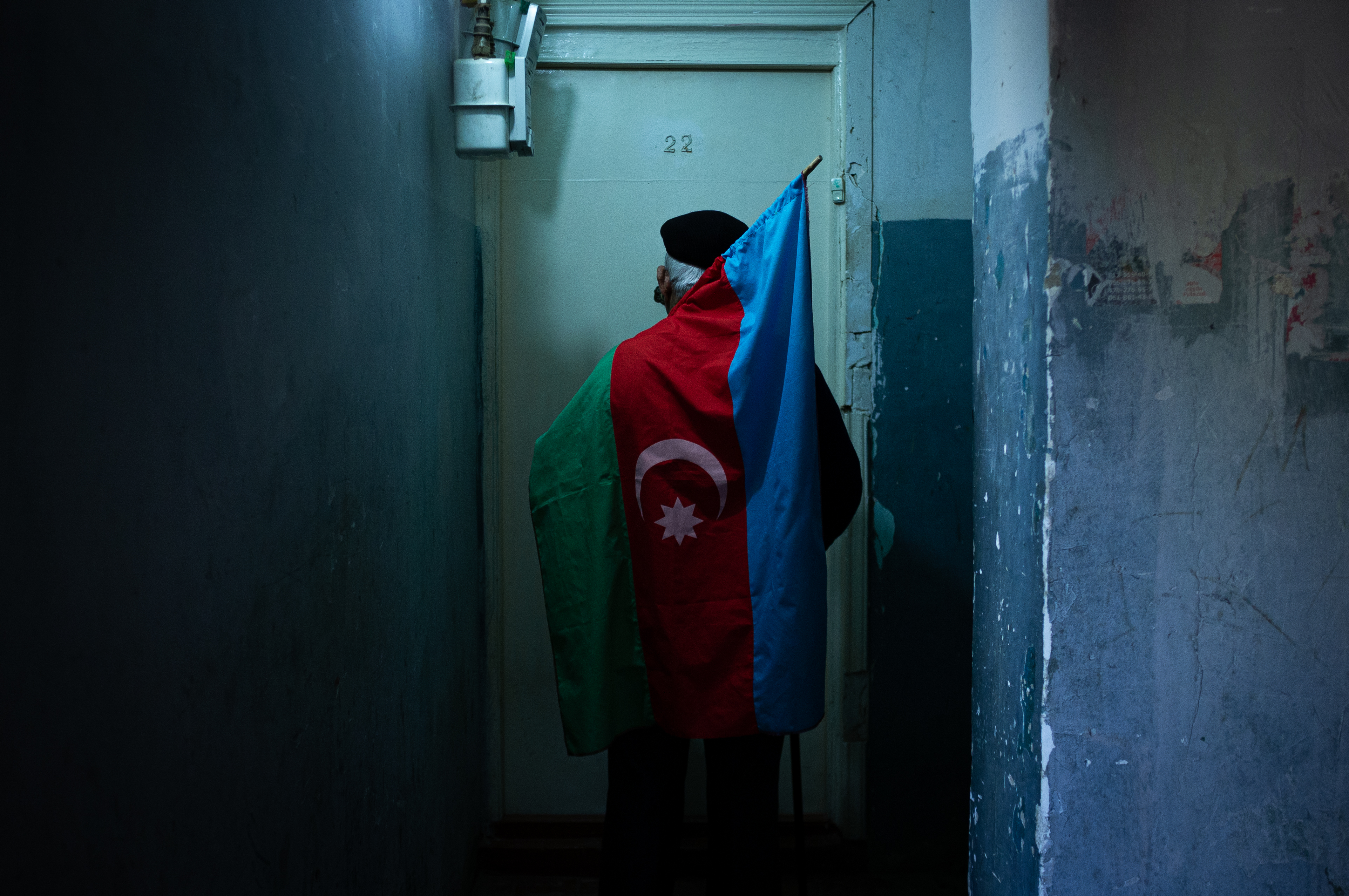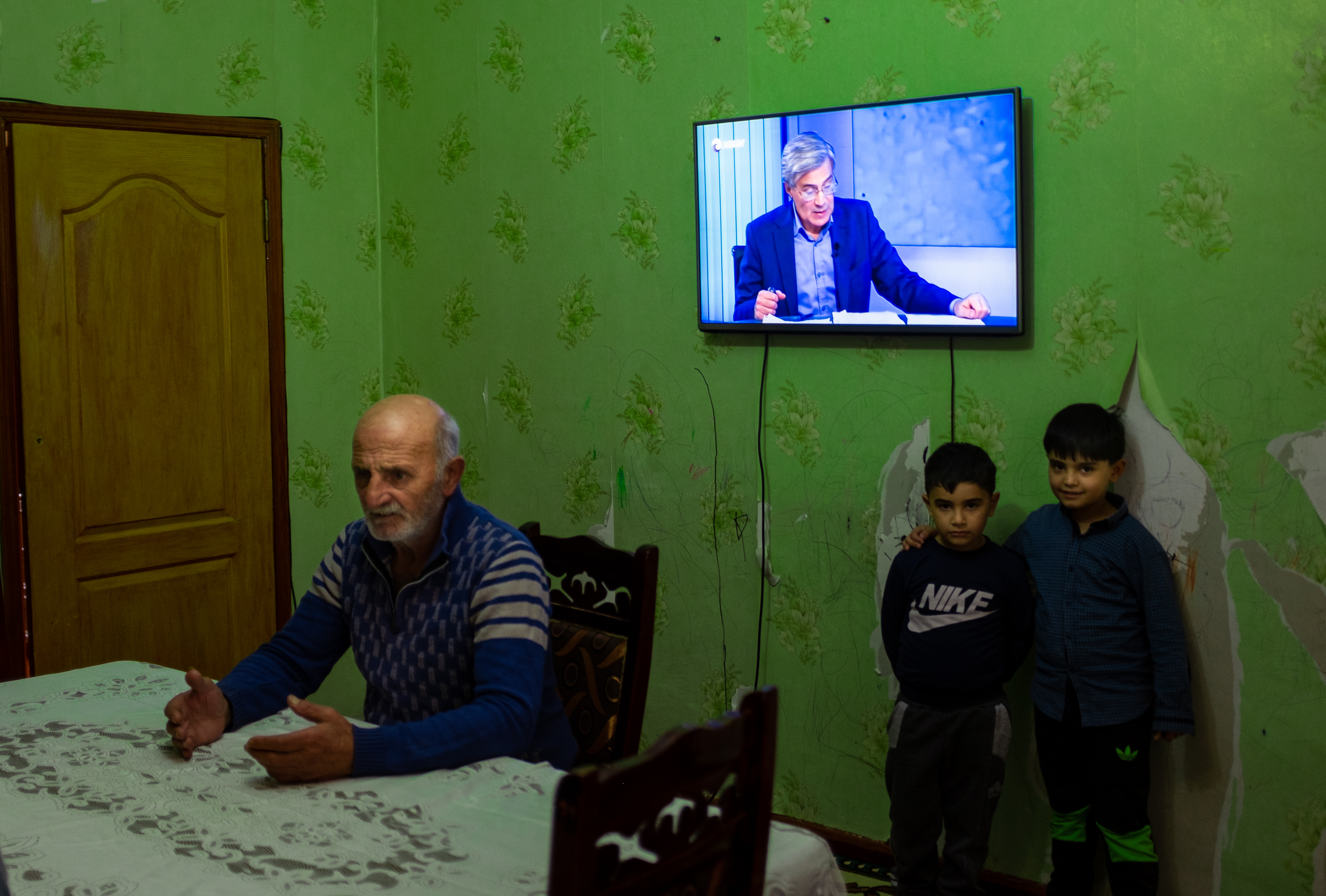“You must go back.”
“Refugees must …resettle in our native lands.”
For nearly 30 years, hundreds of thousands of displaced Azerbaijanis rebuilt their lives in settlements in Baku and elsewhere in the country following the first Karabakh conflict. Now some of their neighbors appear eager for them to go back to their former homes.
"You'll go first,” one wrote under a post by a journalist whose family was among the thousands displaced by the first war. “You were protesting against the government to return the territories. Here they are. They are liberated so you must go back there."
Another social media user expressed surprise when President Ilham Aliyev announced that return to the territories would be voluntary. “What does it mean ‘they may not want to go’? Just like the youth of this nation, our young people with bright futures, liberated those lands in the face of mortal danger, now refugees also must face all the difficulties and resettle in our native lands. There is no other way. Public condemnation should arise in this regard."
Azerbaijanis who lost their homes during the 1988-1994 phase of the conflict have long felt ostracized and isolated by their compatriots.
In the years immediately following the first war, they struggled to survive in makeshift settlements and unsanitary living conditions. Their poverty and lack of property made them stand out even as the rest of the country grappled with the same shortages.
Samir Gasimov, 37, remembers waking before dawn to stand in bread lines in a settlement in Shuvelan, a suburb of capital Baku. Samir and his family fled twice during the fighting, once from Lachin and then from Aghdam, as the Armenian forces pushed deeper into Azerbaijan. They eventually reached a settlement for the displaced in an old pioneer camp outside Baku.
Life was difficult in Azerbaijan in the early 1990s. Samir recalls how everyone had to wait in lines for bread—the natives and the recently displaced. But if locals noticed Samir or someone else from the settlement was waiting alone, they would beat them.
“There were always fights…They would even beat women,” he says, noting children from the settlement started going to the bread lines in groups of five or six. “We learned where every bully lived and tried to avoid those places while walking not to get beaten again.”
Samir remembers how Azerbaijanis who were forced to leave when Armenian forces claimed their villages and towns, like his family, were labelled “refugees,” even though they were displaced from one part of the country to another. Azerbaijanis who fled Armenia were called “Armenian” as an insult.
“Wherever they [locals] saw us, they would point fingers and call us refugees. When parents wanted their kids to stop crying, they would scare them by saying ‘I’m going to show you a refugee,’” he says.
School did not provide a respite: teachers would draw attention to their old shoes or call them names.
The divisions that appeared in Azerbaijani society following the conflict—the othering of people who were displaced by the fighting—were likely caused by several factors, according to sociologists and people who work on conflict-related issues.

Researcher Bakhtiyar Aslanov, who was displaced from Fuzuli in 1993, believes that stigmatizing refugees and the displaced is rooted in psychology, and is not unique to Azerbaijan. “The reasons are mostly psychological. When a group of people come to your community and occupy space and services, as a member of the host community you feel disturbed, occupied,” he says.
Bakhtiyar studies memory, conflict and dialogue as the national coordinator for the Berghof Foundation in Germany. He notes that many of the “new comers” arrived in Baku and other cities from rural communities. Locals viewed their “villager” habits as destructive.
It is difficult to pin down the exact causes of the rift between the groups because the issue was never properly studied, according to Bakhtiyar.
Sociologist Toghrul Abbasov says there was no interest in researching the displaced because they were viewed as a government issue—and the state was not open to allowing outsiders or independent academic research on the topic. That means today not only are public attitudes unclear, the government also does not know exactly how many displaced individuals will be willing to move back to the reclaimed territories, Toghrul says.
Chai Khana found one study online, which was conducted in 2011 with the support of the Brookings Institute.
In the study, several individuals recall the first days of their displacement as memories of solidarity, sheltered and aided by many in the host communities. However, some of them also mention instances when locals were not welcoming. One woman from Khojali said, “They were telling us ‘why did you abandon your homes, why did you not fight for your lands?’”
Journalist Namig Huseynov, 34, recalls that his family was regularly asked why they fled from their native village in Armenia instead of defending it. “What were we supposed to do? Stay in an isolated village and get massacred like in Khojali [referring to the February 1992 tragedy]?”
Study co-author Yuliya Aliyeva noted that another source of tension appeared to be jealousy: the host community resented some of the government programs for displaced families, like free public education and free utilities.
Those feelings persist, notes Namig, especially about housing. Displaced families have been granted apartments over the years, as part of different government initiatives, and there is a misconception that they can game the system to get free flats, Bakhtiyar says. But in reality they never own the property—in fact, under the latest government plan, the families must choose to either resettle in the reclaimed territory or stay in state-owned apartments and lose their other benefits.

Another possible reason for the othering was the fact that hundreds of thousands of people were resettled in mass, with little effort to assimilate them in the local communities—in some cases they went to separate schools and as many as 19,000 families remain in unsuitable housing, such as former factories or other state facilities. Sociologist Toghrul notes that the lack of assimilation was partly due to the government’s efforts to use the group as a “political instrument.”
“The state used it to convince the international and local communities that this is a great social disaster and without their return to home, this disaster continues,” he says.
Bakhtiyar believes there were several factors that complicated the assimilation process. For one, the government hoped that the conflict would be resolved and the people could return home. A general lack of a comprehensive plan on assimilation also hindered the process, he adds.
Discriminatory posts against the displaced are concerning, he says, but it is not a sign that the community is perceived as separate and less equal than other Azerbaijani citizens.
“Over the years, the stigma and stereotypes became either neutralized or positive in society,” he says. “Now many regard IDPs [displaced individuals] as hardworking, not as free riders like 30 years ago. This is a result of sharing the same language, culture and challenges as well as intermarriage, to an extent.”
This article was prepared with support from the Friedrich-Ebert-Stiftung (FES) South Caucasus Regional Office. All opinions expressed are the author’s alone, and do not necessarily reflect the views of FES or Chai Khana.
DONATE NOW

